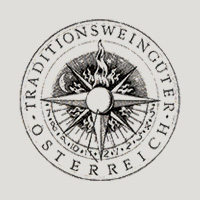It seems every wine region in the world feels the need to classify, and stratify, their vineyards. In the best wine regions of France, vineyards can be designated as premier cru or grand cru vineyards. In neighboring Germany, some very special vineyards may be labeled Erste Lage. But a great vineyard doesn’t necessarily mean a great wine, does it?
So why all this need for creating order out of chaos?
When properly done, classifying a vineyard should mean more than just bragging rights and the chance to charge a premium price. Characterizing a vineyard or a wine should inform the consumer and set expectations for the quality and value of a wine. The problem is that there is no universal system for designating a vineyard as among the best; within Austria there are several that require closer examination.
In Austria there is a countrywide system that designates certain areas, and by extension their wines, as belonging to a DAC or Districtus Austriae Controllatus (Latin for Controlled District of Austria). Like the French DOC system, the Italian DOCG system, and the Spanish DO system, the Austrian DAC system establishes rules for a region or sub region. To bear the DAC designation, an Austrian wine itself must also meet certain criteria. Each DAC specifies the permitted types of grape, labeling, and alcohol content for a wine. Currently there are 8 DAC areas in Austria. Notably absent however, is the important Wachau region. http://en.wikipedia.org/wiki/Districtus_Austriae_Controllatus
In addition to the DACs, classification is also undertaken by interested industry groups (in particular winegrowers and wineries). In Austria, the two most important of these are the “Vinea Wachau Nobilis Districtus” established 1983 for the Wachau district, and the “Österreichische Traditionsweingüter”, founded in 1992, which covers the Kamptal, Kremstal, Traisental, and Wagram areas. These two groups approach classification in very different ways, but in a sense with the same goal of recognizing and promoting quality wine from their respective regions.
The Vinea Wachau Nobilis Districtus, (The Noble Winegrowing Area of the Wachau)
The guiding rules and principles of the Vinea Wachau are embodied in their “Codex Wachau” which requires members to strictly follow six principles in the production of their wines. Further, wines are themselves categorized into one of three groups based more or less exclusively on the alcohol content of the finished wine. Here, the alcohol content is essentially a proxy for the ripeness of the grapes that go into the wine. Riper grapes are generally more concentrated and complex, with elevated sugar levels. There are three ripeness levels (or alcohol levels) which bear the proprietary names of Steinfeder (<11%), Federspiel (11.5-12.5%), and Smaragd (12.5+%).
Curiously, this system does not take into account the quality or reputation of specific vineyards, although many wines do bear the vineyard name. Link to Codex Wachau.
The Österreichische Traditionsweingüter, (The Association of Traditional Austrian Wine Estates)
This organization has undertaken to classify specific vineyard sites as “Erste Lage” (Pronounced “AIR-sta LAH-guh”, roughly translated as “first location” in English), a designation comparable to “Premier Cru”, or “First Growth”. As of 2012, 60 vineyards of Grüner Veltliner and Riesling have been given this designation (only Grüner Veltliner and Riesling are allowed for the DAC).
With this system, it would seem that there is always a risk of “title inflation”, that is, that too many vineyards will be lauded as Erste Lage. In fact, however, there is a disincentive for the existing members of the association to accept new vineyards as Erste Lage because of the exclusivity factor. In a typically Austrian fashion, the group publishes an extensive document (134 pages) called “Klassification 2012” which gives the details of each anointed vineyard: size, elevation, grade (steepness), mapped location, soil type, orientation, grape varieties and the names of the wines produced from each parcel! Despite the vintage variations that inevitably occur each year, for each Erste Lage vineyard, there is a wine that validates that designation. Link to Association of Traditional Austrian Wine Estates
All of this makes for a bit of confusion, but I personally find the Österreichische Traditionsweingüter method to be the most interesting, and the Vinea Wachau method to be the most consumer-friendly.





